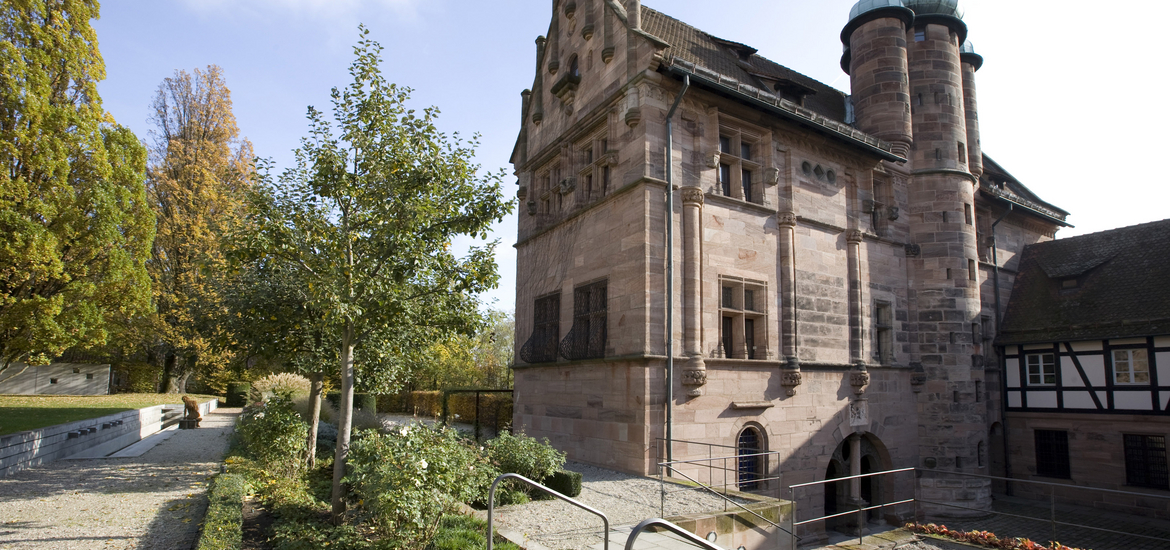Tucher Mansion Museum
Hirschelgasse 9 - 11, 90403 Nürnberg
The domestic world of a prominent 16th century merchant family comes to life again in the Tucher Mansion Museum. The private collection of the Tucher patrician family includes valuable furniture, tapestries, paintings and fine works of the decorative arts.
The picturesque Renaissance garden invites you to picnic there on Sundays and offers a splendid view of the magnificent Hirsvogel Hall (originally built 1534, destroyed 1945, reconstructed 2000). With the exquisite wall paneling by Peter Flötner and the famous painted ceiling by Georg Pencz, a pupil of Dürer, it ranks as one of Germany‘s loveliest Renaissance interiors.
Since May of 2009 twelve newly created plaster of paris busts of the first Roman emperors now complete the interior ensemble - the original Renaissance sculptures have been lost since the post-war period.
Every Sunday, an actress assumes the role of the former lady of the house, Katharina Tucher, and gives a tour of the mansion, completed in 1544, and the Hirsvogel Hall and entices you to explore the historical secrets of the Tucher Mansion.
Key facts:
- the "Hirsvogelsaal" in the garden of the Tucherschloss has been called one of the most beautiful early Renaissance rooms in Europe
- the stately home is a museum today, yet it still belongs to the Nuremberg branch of the baronial family Tucher von Simmelsdorf
- the large-scale painting of the "Fall of Phaeton" in the Hirsvogelsaal was painted on 20 canvases by Dürer's pupil Georg Pencz